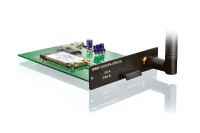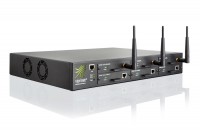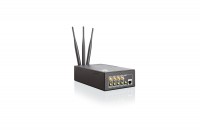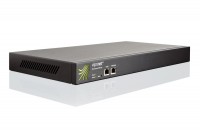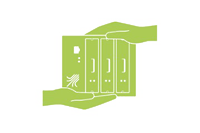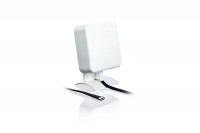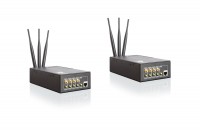Mobile Internet by bonding UMTS / 3G and CDMA
Viprinet provides business Internet by bonding 3G / 3.5G cellular radio with other media such as DSL and 4G cellular radio.
Your benefits from bonding UMTS and CDMA
- Unlimited flexibility and 100% line independence
- High bandwidth by free provider combination
- Suitable for ultra-mobile applications (vehicles, backpack solutions)
- Usability as a backup WAN link for site-to-site connection
- Ideal for connecting locations and facilities that are not accessible by DSL
- Via a Viprinet VPN tunnel, the UMTS or CDMA connection becomes reachable by a static IP address
- Maximum reliability and network availability by bonding several mobile providers

UMTS is a good medium for bonding, better than Load Balancing
With the introduction of the Universal Mobile Telecommunication System (UMTS), cellular radio has made a large step from circuit switched voice network towards packet-switched data network. UMTS / 3G has taken over much of the GSM / GPRS standard and developed from there to a network that offers speeds in Mbps range - much more than was originally planned for.
Whenever mobility and flexibility are required at a site, or if reliability of WAN connections must be made independent of the medium, UMTS or CDMA are the agents of choice. One 3G / UMTS / CDMA connection, however, is not enough for a lasting and stable link because the mobile network of one provider isn't well enough supported everywhere - only bonding multiple 3G / UMTS / CDMA connections, or the combination of wired and wireless links brings the necessary stability of the connection as well as the required reliability.
In virtually every country offering 3G / UMTS / CDMA, there is more than one provider. This is important because the network coverage differs considerably from provider to provider, especially in rural areas.
Bonding here also brings the solution: By combining the different mobile-served areas and by being independent of a single 3G connection, bonding can show its big advantages over single links or load balancing.
In terms of usable bandwidth, it is important to note the following: The maximum bandwidths advertised by mobile phone providers will by far not be achieved in practice. Here, not the air interface between the transceiver and reception tower of the radio cell is the bottleneck but the connection of the radio cell to the WAN. The bandwidth available there, often only 4 Mbps, is shared by all users logged onto the radio cell. This can be up to 100 users, so that for each individual user, only a measly transfer rate remains. By contrast, Viprinet is able to add all available bandwidths together.
Viprinet provides, amongst others, native Hot Plug modems for UMTS / HSPA+ (downward compatible with all previous standards) and CDMA 450 for bonding mobile and other WAN links.

